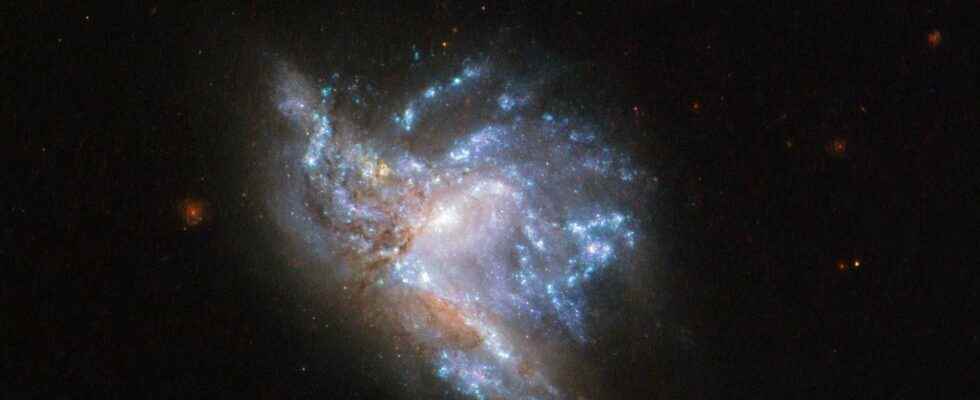Most galaxies, including our Milky Way, grow through the accumulation of new materials that cause new stars to form. Scientists at Arizona State University suggest that the delivery of these materials into a galaxy is associated with intergalactic gas clouds.
You will also be interested
[EN VIDÉO] Collisions of galaxies seen by Hubble Close-ups of six colliding galaxies photographed by Hubble. It happened tens of millions of light years from us, tens of millions of years ago but we only see it now.
It is a relatively well-known fact: in their training process, galaxies accumulate large amounts of matter to form new stars, allowing their growth. But the origin of these materials and the mechanisms that link them to the formation of new stars are still unknown. Previous research in the field of star formation suggests that some galaxies produce more stars than their supply of gas would allow, thus necessarily implying an influx of gas from outside sources to support the formation of new stars.
From the Big Bang to the formation of the first galaxies
The first galaxies began to form a few million years after the big Bangthanks to tiny variations of density within a Universe perfectly homogeneous. It is then the gravitational force which would have taken over to give rise to the first clusters of galaxies, following two possible models currently proposed and debated: the first, “from the largest to the smallest”, suggests that matter first formed clouds giants which, after having collapsed on themselves under the action of gravity, would have given birth to galaxies. The second, “from the smallest to the largest”, considers that small concentrations of matter, forming irregularities in the Universe, would have given rise to clouds of matter then to sets of stars to form protogalaxies; these sets would then have merged under the effect of gravity to form larger galaxies.
The astronomers are currently seeking to combine these two models with their observations. Still under the effect of gravity, large galaxies tend to absorb surrounding smaller galaxies (we even speak of “cannibalism”) to grow, without necessarily forming new stars. This phenomenon of merging galaxies is fairly well known and observed (our Milky Way would currently be absorbing the andromeda galaxy). But the origins of galaxy growth via the production of new stars (and therefore the supply of new materials) are poorly constrained.
Intergalactic gas clouds to feed the galaxies
Arizona State University astronomers carried out statistical studies, based on observation data from telescopes Arecibo and Hubble. They were then able to determine the origin of the gases allowing the production of new stars thanks to cross-correlation methods (quantification association between two phenomena): thus, gas-rich galaxies would be associated with gas clouds located in intergalactic space.
Although their conclusion seems to show that these galaxies would gradually accrete matter from the intergalactic medium, astronomers have not yet been able to directly observe a flow of gas binder these galaxies to intergalactic space. They hope to be able to make further observations in the future, with more extensive stellar coverage, to be able to observe the connection between the galaxies and the intergalactic medium, and possibly identify the path traveled by the gas to reach the internal regions of the galaxies, where stars are usually produced.
Interested in what you just read?
